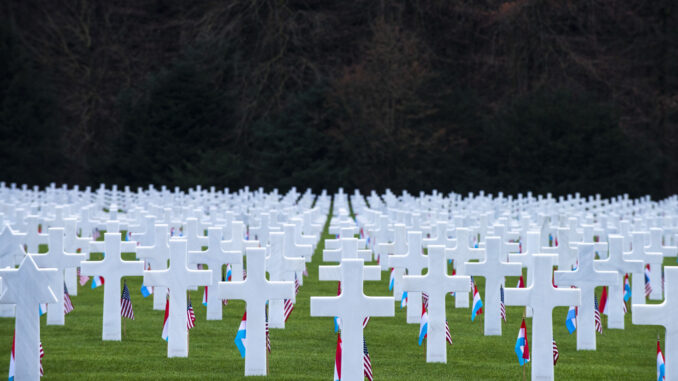
(NAPSI)—A century-old mission takes on new meaning and you can be part of it.
Then
One hundred years ago, America was undertaking a solemn national responsibility unlike any it had previously faced. World War I had just ended, taking the lives of more than 100,000 Americans, and the logistics and cost to bring their remains home were overwhelming for the nation. At the same time, America refused to back down on the promise to give the fallen a respectful place of rest.
The War Department decided to send letters to 74,770 next-of-kin, asking if they would like their loved ones to be brought home or if they would agree to have them laid to rest permanently near the battlefields of Europe. More than 30,000 families elected to have their fallen service members forever honored on the continent they helped saved. This began a tradition that continued after World War II.
Now
In 1923, the American Battle Monuments Commission (ABMC) was established as a federal agency to act as the guardian of American military cemeteries and memorials abroad. Today, ABMC oversees 31 military monuments and 26 burial grounds on five continents, holding more than 123,000 graves.
While these sites remember sacrifices made generations ago, ABMC ensures they remain pristine, stately and awe-inspiring. In ABMC cemeteries, thousands of precisely aligned white headstones mark the graves of the fallen equally, without regard to rank, race, or religion—a historic decision for the segregated era in which they were created. Many sites also contain towering Walls of the Missing, etched with tens of thousands of names who have yet to be recovered. These burial grounds are set in reverent landscapes, adorned with distinguished art and architecture, and are cared for by a staff of both Americans and local citizens.
ABMC’s mission has evolved over the last century. In its early years, ABMC’s sites served largely as places of grieving and remembrance for relatives and comrades. Today, they have become places of education to ensure that new generations know the sacrifice and achievements of those ABMC memorializes and those with whom they served.
What You Can Do
On ABMC’s centennial anniversary, Americans are invited to virtually explore its cemeteries and memorials, visit one of the sites in person, or search ABMC’s online register at ABMC.gov to discover a connection to one of the patriots the agency proudly honors. By making remembrance an action, you will help the nation continue to uphold the promissory words of ABMC’s first chairman, General John J. Pershing, who said, “Time will not dim the glory of their deeds.”

